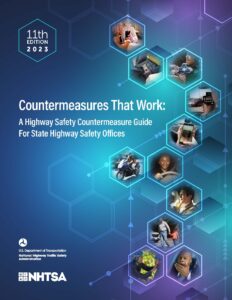A main component of fulfilling the Governor’s Office of Highway Safety mission involves empowering community and independent traffic safety organizations with guidance and support with project funding.
While there are certain criteria that all GOHS grantees must follow, there is by no means an absolute method for creating and maintaining a traffic safety program. Different organizations have different problems and goals. As a result, each GOHS grantee experiences a unique and individual journey in providing a highway safety service.
While each grantee’s situation may be different, we believe that much can be learned from the experiences and successes of others. Ultimately, best practices can serve as a road map for highway safety groups in a way that prevents one from “reinventing the wheel” when attempting to complete desired or similiar tasks.
As such, GOHS has decided to create a place on the web with information regarding best practices for highway safety grantees. Starting with some pre-existing links on highway safety best practices, GOHS hopes to add more links as well as a place for suggestions specific to Georgia grantees on this page. (Click photo)
This guide is a basic reference to assist State Highway Safety Offices (SHSOs) in selecting effective, science-based traffic safety countermeasures for major highway safety problem areas. Bullets describe major strategies and countermeasures that are relevant to SHSOs; summarize their use, effectiveness, costs, and implementation time; and provide references to the most important research summaries and individual studies.
Occupant Protection for Children Best Practices Manual
Across the country, highway safety officials and child safety advocates are working to reduce injuries and save children’s lives by improving occupant protection for children. However, they are often challenged by competing issues and limited resources. To meet this challenge, State Farm Insurance Company® has teamed with GHSA (Governor’s Highway Safety Association)to develop this Best Practices Manual. The Manual provides comprehensive guidelines, an assessment tool and “real world” projects that exemplify one or more of the essential ingredients to program success: commitment, creativity, communication and cooperation.
NHTSA Guide for Advancing Pedestrian and Bicyclist Safety
NHTSA NCSA Tools, Publications, and Data
NHTSA General Search for Best Practices
A NHTSA search for Best Practices will turn up a large number of sources on the site which may be helpful.
Harborview Injury Prevention and Research Center
As a premier research institution, HIPRC investigators have published over 750 articles in peer-reviewed journals, books, and other publications in the field of injury prevention research.
IIHS Study…Low Man Power Checkpoints: Can they provide effective DUI enforcement in small communities
Prepared by John Lacey of PIRE, Sue Ferguson on IIHS and others, this study makes a strong case for using Low Staffing Checkpoints, based on the experience of West Virginia.
View 50 Interesting Ways to Promote Traffic Safety as Taken from Submissions to the IACP Law Enforcment Challenge (pdf)
NHSTA Countermeasures That Work
This guide is a basic reference to assist State Highway Safety Offices (SHSOs) in selecting effective, science-based traffic safety countermeasures for major highway safety problem areas.
U.S. DOT National Roadway Safety Strategy
U.S. DOT Equity Action Plan
U.S. DOT Public Roads (Winter 2022)
Recommendations of the Safe System Consortium
Dangerous by Design
America’s Rural Roads: Beautiful and Deadly
IACP Traffic Safety Resource Guide

